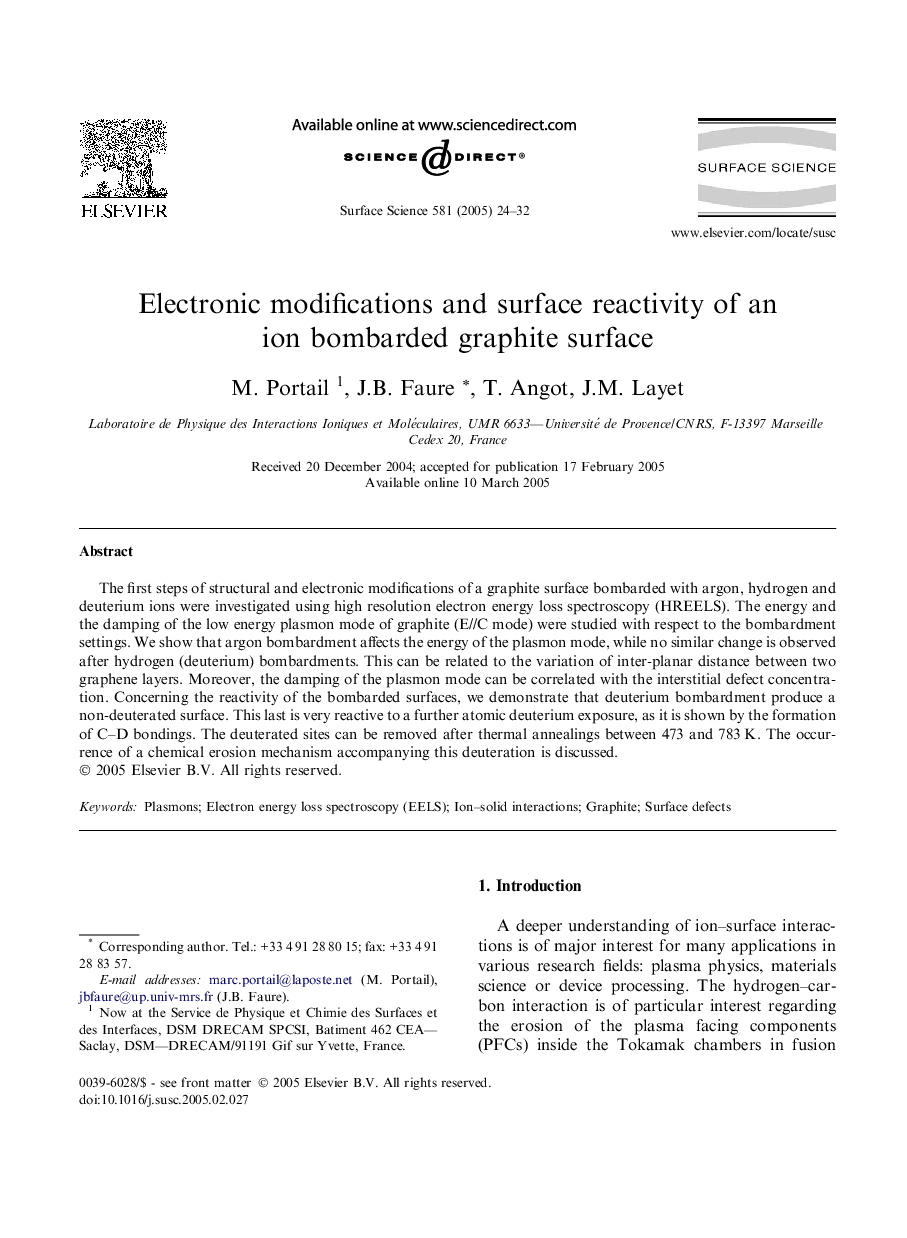| Article ID | Journal | Published Year | Pages | File Type |
|---|---|---|---|---|
| 9595565 | Surface Science | 2005 | 9 Pages |
Abstract
The first steps of structural and electronic modifications of a graphite surface bombarded with argon, hydrogen and deuterium ions were investigated using high resolution electron energy loss spectroscopy (HREELS). The energy and the damping of the low energy plasmon mode of graphite (E//C mode) were studied with respect to the bombardment settings. We show that argon bombardment affects the energy of the plasmon mode, while no similar change is observed after hydrogen (deuterium) bombardments. This can be related to the variation of inter-planar distance between two graphene layers. Moreover, the damping of the plasmon mode can be correlated with the interstitial defect concentration. Concerning the reactivity of the bombarded surfaces, we demonstrate that deuterium bombardment produce a non-deuterated surface. This last is very reactive to a further atomic deuterium exposure, as it is shown by the formation of C-D bondings. The deuterated sites can be removed after thermal annealings between 473 and 783Â K. The occurrence of a chemical erosion mechanism accompanying this deuteration is discussed.
Keywords
Related Topics
Physical Sciences and Engineering
Chemistry
Physical and Theoretical Chemistry
Authors
M. Portail, J.B. Faure, T. Angot, J.M. Layet,
